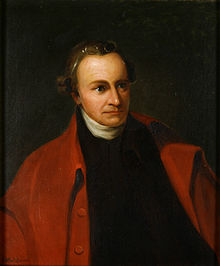Patrick henry
| Patrick Henry | |
|---|---|
 |
|
| 1st & 6th Governor of Virginia | |
|
In office July 5, 1776 – June 1, 1779 |
|
| Preceded by | Edmund Pendleton (acting) |
| Succeeded by | Thomas Jefferson |
|
In office December 1, 1784 – December 1, 1786 |
|
| Preceded by | Benjamin Harrison V |
| Succeeded by | Edmund Randolph |
| Personal details | |
| Born | May 29, 1736 Studley, Colony of Virginia, British America |
| Died | June 6, 1799 (aged 63) Brookneal, Virginia, U.S. |
| Political party |
Anti-Federalist Anti-Administration Federalist |
| Spouse(s) | Sarah Shelton Dorothea Dandridge |
| Profession | Planter, lawyer |
| Signature |  |
Patrick Henry (May 29, 1736 – June 6, 1799) was an American attorney, planter and politician who became known as an orator during the movement for independence in Virginia. A Founding Father, he served as the first and sixth post-colonial Governor of Virginia, from 1776 to 1779 and from 1784 to 1786.
Henry led the opposition to the Stamp Act 1765 and is remembered for his "Give me liberty, or give me death!" speech. Along with Samuel Adams and Thomas Paine, he is regarded as one of the most influential champions of Republicanism and an enthusiastic promoter of the American Revolution and its fight for independence.
After the Revolution, Henry was a leader of the anti-federalists in Virginia. He opposed the United States Constitution, fearing that it endangered the rights of the States as well as the freedoms of individuals; he helped gain adoption of the Bill of Rights. However, by 1798 he supported President John Adams and the Federalists. He denounced passage of the Kentucky and Virginia Resolutions as he feared the social unrest and widespread executions that had followed the increasing radicalism of the French Revolution.
After he married, Henry began acquiring extensive land holdings. By 1779, along with his cousin and her husband, Henry owned a 10,000-acre (40 km2) plantation known as Leatherwood. He is also recorded having purchased up to 78 slaves. In 1794, he and his wife retired to Red Hill Plantation, comprising 520 acres (2.1 km2) in Charlotte County, which was also a functioning tobacco plantation.
...
Wikipedia
